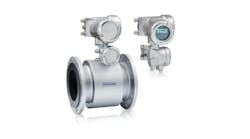by Steve Maxwell
As most of us are too well aware, the general economy and financial markets have taken a bit of a nose dive in the past year. As implications of the ongoing credit crisis emerged, most publicly traded stocks have taken a big hit. Many investors are pretty down on their luck and worried about potentially more dire circumstances on the horizon.
But one sector has remained relatively immune from the downturn. That's right – the water sector. Why? In a very real sense, it's because investors, and people in general, are realizing water is a critical and increasingly scarce resource, and one that truly represents the ultimate "store of value." Gold, silver and platinum may be where investors typically flee during economic crises, but today water represents a similar theme – an intrinsic long-term value asset in your portfolio.
In general, the world water situation is a case of supply and demand. We live on a planet where demand for fresh clean water continues to soar – due to growth in population and per capita usage. Shifting population and decaying infrastructure – globally – continue to strain our ability to treat, store and move our limited supplies of water. Possible climate change impacts will only exacerbate these challenges, likely requiring vast new expenditures in water storage and transmission. On the other side, we may be able to garner small amounts of new freshwater by desalinating the oceans, but pollution also has destroyed the practical usability of many of our natural water resources – essentially, our supply of freshwater is fixed. So it's not surprising companies in the commercial water business – suppliers of products and services to help address these pressing needs – continue to grow and perform well.
Specific market sectors receiving new attention include water treatment, purification and recycling technologies, such as membrane filtration, UV radiation, and different types of seawater desalination processes. Water reuse and conservation are often cited as some of the most robust sectors of the overall industry – and collectively they represent the potential to greatly extend our natural water resources. Companies active in this sector include the diversified and international giants such as GE, Siemens, Veolia, ITT and SUEZ – all major players in the industry, but not really pure-play water investments. Hundreds of smaller companies are also actively developing new technologies and approaches to address these challenges and opportunities.
With increasing concerns about degrading transmission and distribution infrastructure – likely to be intensified by climate change issues – manufacturers of pumps, pipes, valves and other distribution equipment are apt to continue to enjoy strong growth – companies like Northwest Pipe, Gorman-Rupp, and Ameron. This may not be the investment industry's most glamorous or "high tech" area, but it's certainly where a lot of future dollars will be spent. With cities losing on average 30% of treated water to faulty distribution systems, water loss management is an increasingly important subsector of this.
Also more in the spotlight recently are companies that supply products and services geared to more efficient water use, be that cropland irrigation or water loss management. Many people are surprised to learn up to 75% of our total national water consumption goes to agricultural irrigation – a historically inefficient process. Minor improvements here could extend our existing water resources considerably – providing a new redirected "source" of water to our thirsty cities. New technologies like drip irrigation and mechanized center-pivot systems can help to make agricultural irrigation far more efficient. Evidence of this area's bright commercial future is underscored by John Deere's recent acquisition of small irrigation companies. Public companies in this business include Lindsay and Valmont Industries.
Finally, another area of potential investment is also starting to emerge – actual ownership of water itself via acquisition of water rights. Although this is fraught with political sensitivities, complex regulations and highly variable legal frameworks, more investment professionals are recognizing its value. We'll undoubtedly see new and innovative approaches to matching private capital with these public needs.
The facts are simple – water is an essential prerequisite of life, critical to sustain and improve our standard of living and our modern industrial economy – and there's no substitute. Efficiency and conservation need to improve quickly. We face numerous and daunting political and economic challenges, but this represents almost limitless opportunities for innovative companies to help provide new solutions. Despite ups and downs in the general economy, the water industry will remain a bright spot and sustainable opportunity for investors.
About the Author: Steve Maxwell is managing director of TechKNOWLEDGEy Strategic Group, a Boulder, CO, management consultancy specializing in merger and acquisition advisory services for the water and broader environmental industries. He's also editor of a new book "The Business of Water" – a collection of commerce-related articles about water. Contact: 303-442-4800 or [email protected]

